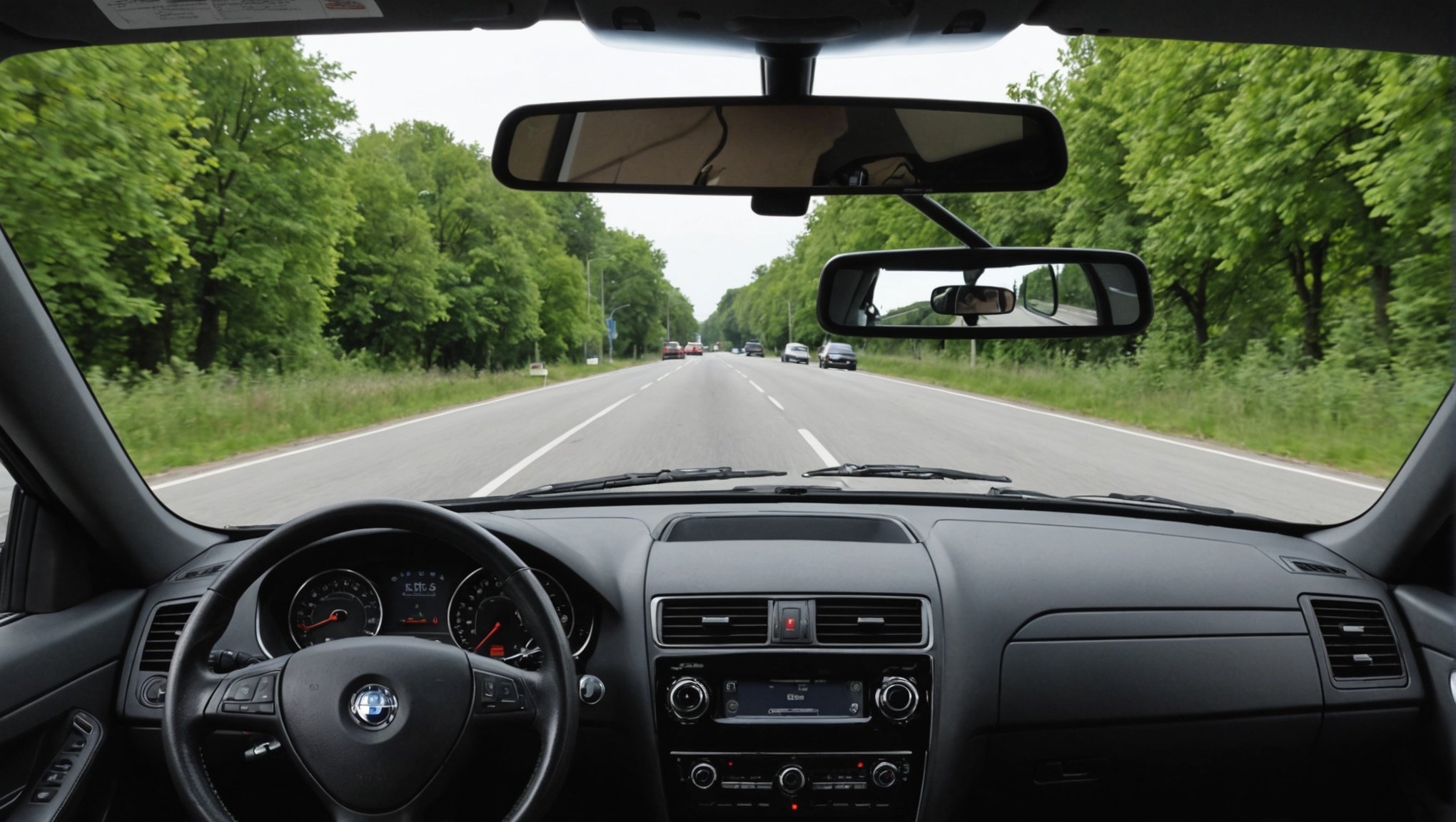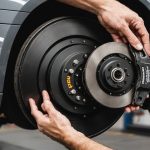Adjusting rear-view mirrors in a convertible versus a sedan brings unique challenges and experiences. Each car type presents distinct perspectives, influenced by design and functionality. This exploration highlights how mirror adjustments cater to drivers' needs, affecting visibility and comfort. Understanding these differences can enhance your driving experience, whether you're cruising in style or commuting daily. Let's uncover the nuances that shape mirror adjustments in these two popular vehicle types, and how they impact your overall driving satisfaction.
Overview of Rear-View Mirror Adjustments
Having properly adjusted rear-view mirrors is crucial for enhancing vehicle visibility and ensuring a safer driving experience. Rear-view mirrors play a pivotal role in minimizing blind spots, allowing drivers to make informed decisions on the road.
Additional reading : How should you approach driving on UK roads during a storm?
When it comes to rear-view mirror adjustments, there are common techniques that drivers should be familiar with. The most traditional method involves adjusting the interior mirror to frame the rear window, providing a clear view of the road behind. Side mirrors should be positioned to barely show the sides of the vehicle, thereby expanding the field of vision and reducing blind spots. This technique is often referred to as the Blindspot and Glare Elimination (BGE) method.
It's also important to note the differences in mirror design between convertibles and sedans. Convertibles often have smaller rear-view mirrors due to their design, which can impact visibility. In contrast, sedans typically offer larger mirrors, providing a broader view of the surroundings.
Also read : Mastering Your Braking Technique: Essential Adjustments After Upgrading to Ceramic Brake Pads
Understanding these adjustment techniques and design differences can significantly improve a driver's ability to monitor traffic, change lanes safely, and navigate through various driving conditions. Prioritizing proper mirror adjustment is a simple yet effective way to enhance overall road safety.
Visibility Differences in Convertibles vs. Sedans
Understanding vehicle visibility is crucial for safe driving, and it varies significantly between convertibles and sedans. The structural design of these vehicles greatly impacts rear visibility. Convertibles, with their open-top design, often have reduced convertible visibility due to smaller rear-view mirrors and obstructions from the vehicle's frame. This can limit the driver's ability to see behind clearly.
In contrast, sedans generally offer better sedan visibility. Their enclosed structure allows for larger rear-view mirrors, providing a broader view of the surroundings. The height and angle of mirrors are also important considerations. Convertibles, being lower to the ground, may require different mirror angles to compensate for their unique design challenges.
Common visibility issues faced by convertible drivers include blind spots caused by the vehicle's frame and limited rear window size. These issues necessitate more frequent adjustments and heightened awareness. Sedan drivers, on the other hand, benefit from a more consistent and expansive field of vision.
To address these differences, drivers should regularly adjust their mirrors to optimize visibility. Understanding the impact of vehicle structure on rear visibility can significantly enhance driving safety and comfort. Prioritizing these adjustments ensures that both convertible and sedan drivers maintain optimal awareness on the road.
Adjustability Features in Rear-View Mirrors
Exploring the mirror adjustability in vehicles reveals significant differences between manual vs. automatic mirrors. Manual mirrors require the driver to physically adjust the mirror angles to achieve the desired view. This method, while straightforward, can be cumbersome, especially when frequent adjustments are necessary due to varying driving conditions or multiple drivers.
In contrast, automatic mirrors offer a more convenient solution. These mirrors can be adjusted electronically, often with controls located within easy reach of the driver. This feature not only enhances comfort but also allows for precise adjustments, ensuring optimal visibility with minimal effort. Modern vehicles often incorporate advanced mirror technology, such as memory settings, which remember the preferred mirror positions for different drivers, further enhancing convenience and safety.
Convertibles present unique challenges for mirror adjustability. Due to their design, they often feature specialized mirrors that can be adjusted to account for the lower seating position and potential obstructions from the vehicle's frame. These adjustments are crucial for maintaining visibility in diverse driving conditions.
In sedans, the ergonomics of mirror placement is carefully considered to provide a comfortable driving experience. The mirrors are typically positioned to minimize blind spots while ensuring the driver can adjust them easily, promoting a safer and more enjoyable drive.
Blind Spots: A Comparative Analysis
Understanding blind spots is essential for ensuring road safety. The design of a vehicle significantly influences the size and location of its blind spots, particularly when comparing convertibles and sedans. Convertibles, with their open-top design and structural elements, may have more pronounced blind spots. The smaller rear-view mirrors in convertibles can also limit rear-view visibility, making it challenging to monitor traffic.
In contrast, sedans generally provide better visibility due to their enclosed structure and larger mirrors, which help reduce blind spots. However, even in sedans, blind spots can still pose a risk if not properly managed.
Rear-view mirrors play a crucial role in mitigating blind spots. By offering a wider field of vision, they enable drivers to detect vehicles and obstacles that might otherwise go unnoticed. Proper adjustment of these mirrors is vital for maximizing visibility and minimizing blind spots.
Drivers can employ several strategies to overcome blind spots. For instance, regularly checking mirrors and physically turning to check blind spots before changing lanes are effective practices. Additionally, incorporating modern safety features like blind spot detection systems can further enhance awareness and safety for both convertible and sedan drivers. Prioritizing these strategies can lead to a safer driving experience.
User Comfort and Experience
Understanding driver comfort is essential when evaluating the user experience in different vehicles, especially with regard to mirror usability. Drivers often report varying levels of comfort when using rear-view mirrors in convertibles compared to sedans. Convertibles, with their unique design, may lead to challenges in achieving optimal mirror positioning, impacting overall comfort during long drives.
Feedback from convertible drivers indicates that the smaller rear-view mirrors can be less comfortable to use, requiring frequent adjustments to maintain visibility. This can lead to a more strenuous driving experience, particularly on long journeys where sustained comfort is crucial. In contrast, sedan drivers often enjoy a more comfortable experience due to larger mirrors and more straightforward adjustability.
The adjustability of rear-view mirrors plays a significant role in enhancing long-distance driving comfort. Automatic mirrors, with memory settings, can significantly improve comfort by allowing drivers to easily revert to their preferred settings. This feature reduces the need for constant manual adjustments, providing a more relaxed driving experience.
Ultimately, the usability of rear-view mirrors in both convertibles and sedans directly affects driver comfort and satisfaction, highlighting the importance of mirror design and adjustability in enhancing the overall user experience.
Expert Opinions on Mirror Adjustments
Understanding mirror adjustments is crucial for enhancing automotive safety. Insights from experts shed light on the best practices for setting rear-view mirrors to ensure optimal visibility. According to automotive safety experts, proper mirror positioning can significantly reduce blind spots and improve driver awareness.
Professionals recommend several mirror adjustment tips to achieve the best results. Firstly, the interior rear-view mirror should be positioned to frame the entire rear window, offering a clear view of the road behind. For side mirrors, experts suggest the Blindspot and Glare Elimination (BGE) method. This involves adjusting the mirrors to show just a sliver of the vehicle's side, expanding the field of vision and minimizing blind spots.
Experts emphasize the importance of regular mirror adjustments. As driving conditions change, such as different seating positions or varying loads, mirrors should be readjusted to maintain optimal visibility. Regular checks and adjustments ensure that mirrors provide the best possible view, enhancing overall driving safety.
Incorporating these expert insights into daily driving habits can lead to a safer and more comfortable experience on the road. By prioritizing proper mirror adjustments, drivers can significantly improve their ability to monitor traffic and navigate safely.
Practical Tips for Adjusting Rear-View Mirrors
Achieving the right mirror adjustment is vital for enhancing driving safety. Here are some practical steps to help you adjust your mirrors effectively, whether you drive a convertible or a sedan.
Step-by-Step Guide for Adjusting Mirrors in Convertibles
- Interior Mirror: Position it to frame the entire rear window. This ensures maximum visibility of the road behind.
- Side Mirrors: Adjust to show just a sliver of the vehicle's side. This helps reduce blind spots, crucial given the convertible's unique design.
Step-by-Step Guide for Adjusting Mirrors in Sedans
- Interior Mirror: Align it with the rear window, providing a clear view of the traffic behind.
- Side Mirrors: Adjust similarly to convertibles, but consider the sedan's higher seating position for optimal coverage.
Common Mistakes to Avoid
- Over-adjustment: Avoid adjusting mirrors too far outward, which can create blind spots.
- Neglecting Regular Checks: Regularly check and adjust mirrors, especially after seat adjustments or when carrying heavy loads, to maintain optimal visibility.
- Ignoring Maintenance: Regular vehicle maintenance includes ensuring mirrors are clean and functioning properly, as dirty or damaged mirrors can impair visibility.
By following these driving safety tips, you can ensure a safer and more comfortable driving experience.
Visual Aids for Better Understanding
To enhance your comprehension of rear-view mirror adjustments, various visual aids can be invaluable. These aids provide a clearer picture of the differences in mirror setups between convertibles and sedans.
Illustrative Diagrams
One effective instructional content is diagrams that compare mirror setups in both vehicle types. These diagrams can highlight the positioning of mirrors in convertibles versus sedans, showcasing how each design affects visibility. Such visual aids allow drivers to understand the unique challenges and solutions for each vehicle type.
Videos Demonstrating Adjustment Techniques
Videos serve as another powerful tool, demonstrating proper adjustment techniques step by step. By watching these videos, drivers can visually grasp the correct angles and positions for their mirrors, ensuring they achieve optimal visibility. These instructional videos often include expert tips, making them a practical resource for both novice and experienced drivers.
Infographics Highlighting Visibility Differences
Infographics provide a concise yet comprehensive overview of visibility differences between convertibles and sedans. They can visually depict blind spot areas, mirror angles, and other critical factors that influence visibility. By presenting this information in a visually engaging format, infographics make it easier for drivers to understand and remember essential details about mirror adjustments.
User Reviews and Experiences
Understanding user reviews and driver experiences provides valuable insights into the performance of rear-view mirrors in both convertibles and sedans. These real-world feedbacks highlight how mirror usability impacts daily driving.
Convertible Driver Experiences
Convertible owners often report challenges with mirror performance due to their vehicle's design. User reviews frequently mention the need for frequent adjustments to maintain visibility, especially in varying light conditions. Some drivers note that the smaller mirrors can make it harder to gauge distances, affecting their confidence when changing lanes or reversing.
Sedan Driver Insights
In contrast, sedan drivers generally express satisfaction with their rear-view mirrors. Driver experiences often highlight the ease of achieving optimal visibility due to larger mirror sizes. Many reviews emphasize the convenience of automatic adjustments, which enhance comfort and safety by reducing blind spots.
Influence on Purchasing Decisions
These user experiences significantly influence purchasing decisions. Prospective buyers often rely on real-world feedback to assess whether a vehicle will meet their visibility needs. Positive reviews about mirror performance can sway a buyer towards a particular model, while negative feedback may deter them. Understanding these experiences helps manufacturers improve mirror designs to better cater to driver needs.
Safety Considerations and Regulations
Understanding safety regulations for rear-view mirrors is essential for ensuring compliance and enhancing vehicle safety. These regulations dictate the standards for vehicle safety features, including the size, placement, and functionality of rear-view mirrors. Compliance with these laws is crucial for both convertibles and sedans to ensure optimal visibility and reduce blind spots.
Overview of Safety Regulations
Safety regulations specify that all vehicles must be equipped with functional rear-view mirrors that provide a clear view of the road behind. These laws vary by region but generally require mirrors to meet specific size and angle criteria to ensure driver safety. For convertibles, additional considerations may be necessary due to their unique design, which can affect mirror placement and effectiveness.
Importance of Compliance
Adhering to rear-view mirror laws is vital for maintaining road safety. Non-compliance can result in fines and increased risk of accidents due to impaired visibility. Both convertible and sedan drivers must regularly check their mirrors for damage and ensure they are correctly positioned to comply with legal standards.
Future Trends
The future of vehicle design is leaning towards integrating advanced vehicle safety features. Innovations such as digital mirrors and enhanced blind spot detection systems are becoming more prevalent, promising improved safety and compliance with evolving regulations. These advancements aim to provide drivers with better tools to navigate safely, regardless of vehicle type.
















